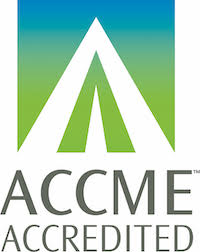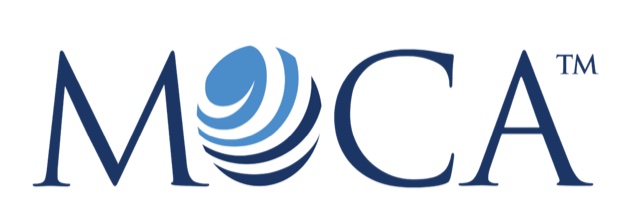Continuing Medical Education (CME) Activity Information
Target Audience:
The material taught in this course is essential content for anesthesiologists and anesthesia residents, both within the United States and internationally. In addition, Certified Registered Nurse Anesthetists (CRNA), Student Registered Nurse Anesthetists (SRNA), critical care physicians, and critical care nurses may benefit from the material taught within this course.
Learning Objectives:
- Describe the general biophysics of what the EEG is detecting and demonstrate the relationship between the EEG waveform and spectrogram.
- Interpret the typical EEG waveform and spectrogram patterns associated with commonly used anesthetic drugs.
- Discuss the different underlying neurophysiological mechanisms of how commonly used anesthetic drugs produce anesthesia effects. Extrapolate how these different mechanisms relate to the unique EEG patterns of the different drugs.
- Identify patterns associated with common EEG artifacts that may arise due to electrode placement or specific surgical activities.
- Apply concepts described above to a variety of case studies and assess EEG patterns observed in these cases.
- Observe age-related changes to the brain and how the EEG signal during anesthesia may change as a result of typical aging.
Disclosures:
The IARS makes every effort to develop CME activities that are independent, objective, scientifically balanced presentations of information. The IARS has implemented mechanisms requiring everyone in a position to control content to disclose all relevant financial relationships with ineligible companies. Disclosure of any or no relationships is made available in advance of all educational activities.
The IARS evaluates the disclosures and, if necessary, resolves any conflicts of interest prior to the start of the activity. Individuals who refuse or fail to provide the required disclosures are disqualified from being a planning committee member, teacher, or author of CME, and cannot have control of, or responsibility for, the development, management, presentation or evaluation of the CME activity.
The planners, speakers, and others in a position to control content of this activity have disclosed no relevant financial relationships and have no conflicts of interest.
Disclaimer
The information provided in this CME activity is for continuing education purposes only and is not meant to substitute for the independent medical judgment of a healthcare provider relative to diagnostic and treatment options of a specific patient’s medical condition.
Commercial Support
Commercial support was received by Masimo (original release).
Accreditation Statement
 The International Anesthesia Research Society is accredited by the Accreditation Council for Continuing Medical Education (ACCME) to provide continuing medical education for physicians.
The International Anesthesia Research Society is accredited by the Accreditation Council for Continuing Medical Education (ACCME) to provide continuing medical education for physicians.Credit Designation Statement
- The IARS designates Basics of Clinical EEG for General Anesthesia and Sedation for a maximum of 3 AMA PRA Category 1™ Credits.
- The IARS designates Anesthesia EEG Case Studies for a maximum of 3 AMA PRA Category 1™ Credits.
- The IARS designates Clinical EEG for Anesthesia Management of Elderly Patients for a maximum of 3 AMA PRA Category 1™ Credits.
Physicians should claim only the credit commensurate with the extent of their participation in the activity.
Maintenance Of Certification in Anesthesiology (MOCA®)

- Basics of Clinical EEG for General Anesthesia and Sedation offers up to 3 MOCA points, of which 3 points contribute to the patient safety CME component of the American Board of Anesthesiology’s redesigned Maintenance of Certification in Anesthesiology™ (MOCA®) program, known as MOCA 2.0®.
- Anesthesia EEG Case Studies offers up to 3 MOCA points, of which 3 points contribute to the patient safety CME component of the American Board of Anesthesiology’s redesigned Maintenance of Certification in Anesthesiology™ (MOCA®) program, known as MOCA 2.0®.
- Clinical EEG for Anesthesia Management of Elderly Patients offers up to 3 MOCA points, of which 3 points contribute to the patient safety CME component of the American Board of Anesthesiology’s redesigned Maintenance of Certification in Anesthesiology™ (MOCA®) program, known as MOCA 2.0®.
Please consult the ABA website, www.theABA.org, for a list of all MOCA 2.0 requirements.
Claiming Credit
After having completed the activity and its associated evaluations, you will need to claim AMA PRA Category 1 Credit™. You will also have the opportunity to claim MOCA points by entering your eight-digit ABA identification number in your system profile. The IARS forwards credits to the ABA on a quarterly basis.
Content Validity
This course was reviewed to ensure that the content is still up-to-date and accurate.
- Basics of Clinical EEG for General Anesthesia and Sedation
Content Review Date: 13-JAN-2023
Original Release Date: 18-APR-2018
Termination Date: 31-DEC-2024 - Anesthesia EEG Case Studies
Content Review Date: 13-JAN-2023
Original Release Date: 01-OCT-2018
Termination Date: 31-DEC-2024 - Clinical EEG for Anesthesia Management of Elderly Patients
Content Review Date: 13-JAN-2023
Original Release Date: 01-OCT-2018
Termination Date: 31-DEC-2024